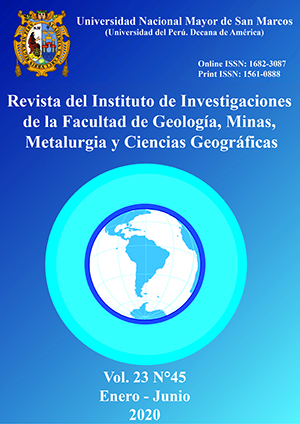Actions to reduce reconciliation differences between received mineral and sent to mill
DOI:
https://doi.org/10.15381/iigeo.v23i45.18059Keywords:
Mining reconciliation, metal content, mineral polygons, stockpiles, short term model (grade control)Abstract
In all mining operations, a reconciliation system is necessary, which allows measuring the performance of the processes involved in obtaining the final product, from the reserve-resource models, through mine design, mine planning, mining production, until culminating in the metallurgical process.
It is through the relationship between the ore received (ground ore) with the ore sent to grinding (short-term model), that reconciliation factors will result for tonnage, grade and metal. Subsequently, they will be evaluated in a monthly, quarterly and / or annual period of time, and will help to refine the processes and sub-processes of the short-term model, as well as the mining process and the metallurgical process. The results will be reflected in the reduction of the differences in the reconciliation factors for tonnage, grade and metal, this reduction must be supported over time; In other words, a mining reconciliation system must be part of continuous improvement throughout the value chain of the mining process.
Downloads
Published
Issue
Section
License
Copyright (c) 2020 Johans Herrera Valdez, Jaime César Mayorga Rojas

This work is licensed under a Creative Commons Attribution-NonCommercial-ShareAlike 4.0 International License.
AUTHORS RETAIN THEIR RIGHTS:
a. Authors retain their trade mark rights and patent, and also on any process or procedure described in the article.
b. Authors retain their right to share, copy, distribute, perform and publicly communicate their article (eg, to place their article in an institutional repository or publish it in a book), with an acknowledgment of its initial publication in the Rev. Inst. investig. Fac. minas metal cienc. geogr.
c. Authors retain theirs right to make a subsequent publication of their work, to use the article or any part thereof (eg a compilation of his papers, lecture notes, thesis, or a book), always indicating the source of publication (the originator of the work, journal, volume, number and date).























